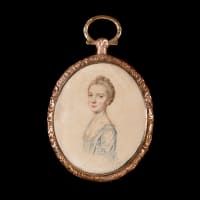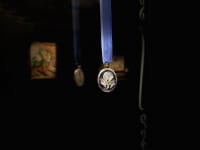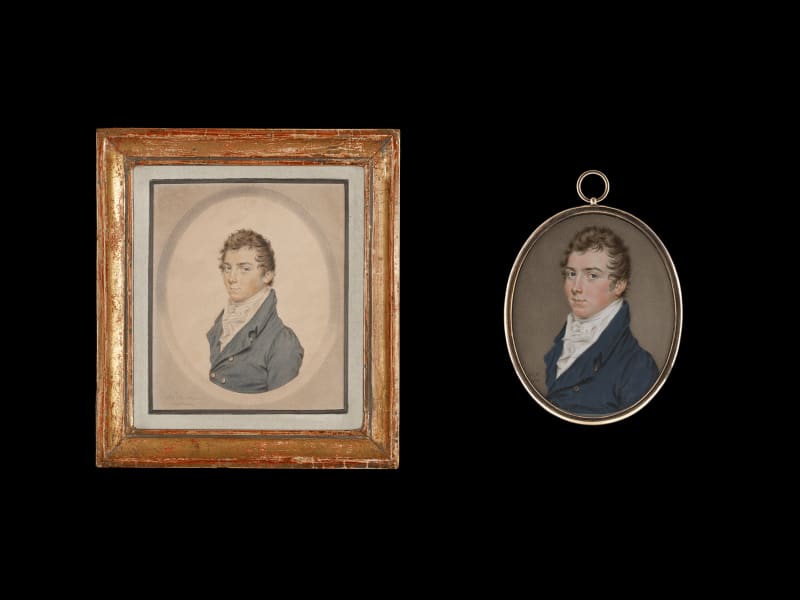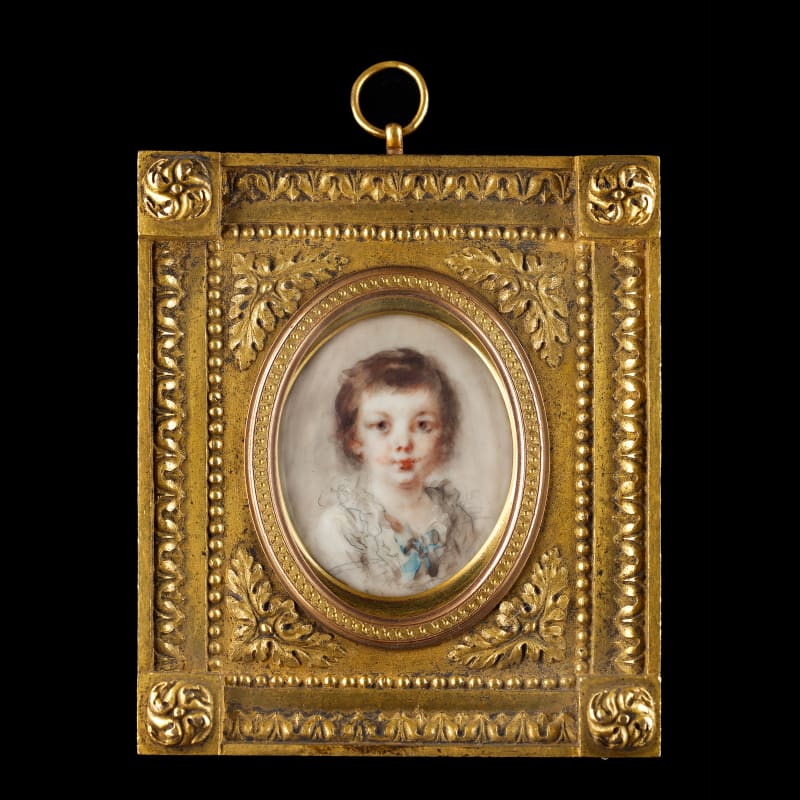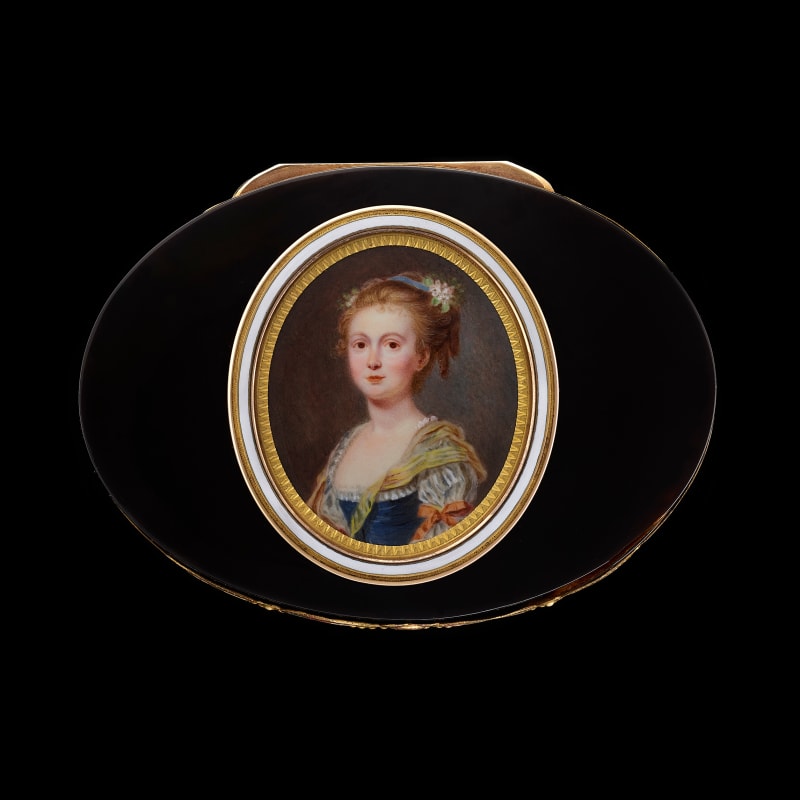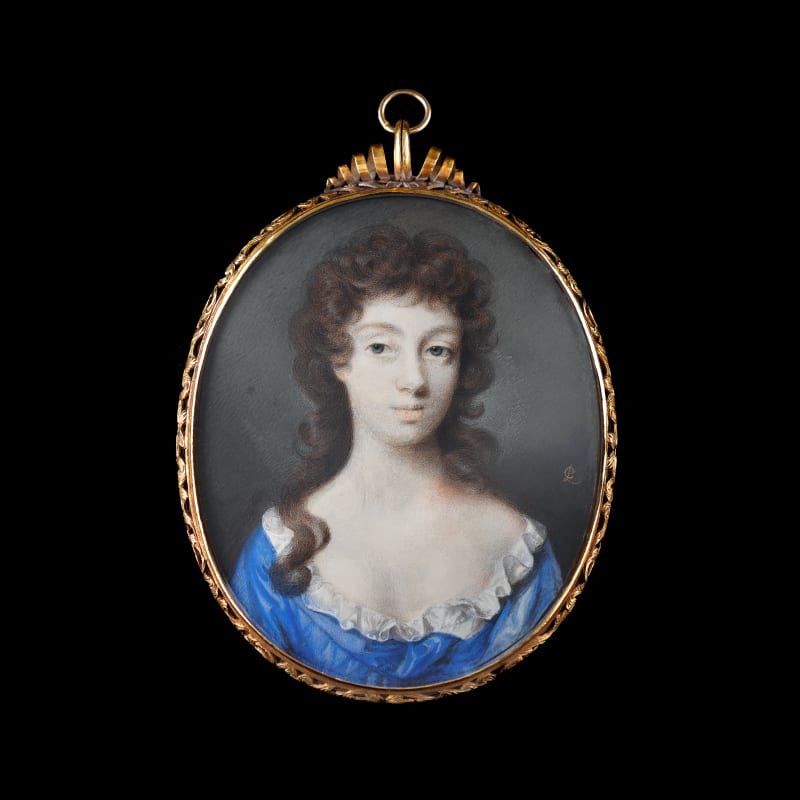Recent conservation of this preparatory drawing has revealed the name ‘Miss Denton’ on the reverse of the card, written in Smart’s hand. It is possible that ‘Miss Denton’ later married a gentleman of the Murray family, possibly the ‘Charles Murray’, painted by Smart in 1773 and now at Polesden Lacey (National Trust). ‘Miss Denton’ may be in her early teens in this image and not yet of a marriageable age. A sketch of a ‘Mrs Murray’ by John Smart appeared at auction in 2005 and may show the same sitter now a young, married woman.
This portrait is one of the earliest examples of Smart using preparatory sketches for his portrait miniatures. By the mid-1760s, Smart was honing his technique, refining his miniatures into masterpieces of precision. This portrait of Miss Denton stands at the cusp of the artist’s development, retaining the ‘modest’ qualities of the smaller portraits of the 1760s, while looking towards Smart’s colourful, meticulous works of...
Recent conservation of this preparatory drawing has revealed the name ‘Miss Denton’ on the reverse of the card, written in Smart’s hand. It is possible that ‘Miss Denton’ later married a gentleman of the Murray family, possibly the ‘Charles Murray’, painted by Smart in 1773 and now at Polesden Lacey (National Trust). ‘Miss Denton’ may be in her early teens in this image and not yet of a marriageable age. A sketch of a ‘Mrs Murray’ by John Smart appeared at auction in 2005 and may show the same sitter now a young, married woman.
This portrait is one of the earliest examples of Smart using preparatory sketches for his portrait miniatures. By the mid-1760s, Smart was honing his technique, refining his miniatures into masterpieces of precision. This portrait of Miss Denton stands at the cusp of the artist’s development, retaining the ‘modest’ qualities of the smaller portraits of the 1760s, while looking towards Smart’s colourful, meticulous works of the 1770s and 80s (note, for example, the carefully drawn curls which crown the sitter’s head and the particular care taken to capture the fall of the drapery in the sleeves of her gown). It is likely that Smart used preparatory drawings to reduce the waiting time for his miniatures on ivory. A hardworking man, but with little, it seems, in the way of social graces, Smart may have preferred to work on the final miniatures in peace. Since his great grandchildren decided to sell the contents of his studio in the 1930s, his preparatory sketches have become available to collectors and are highly prized for their combination of immediacy and finesse.



